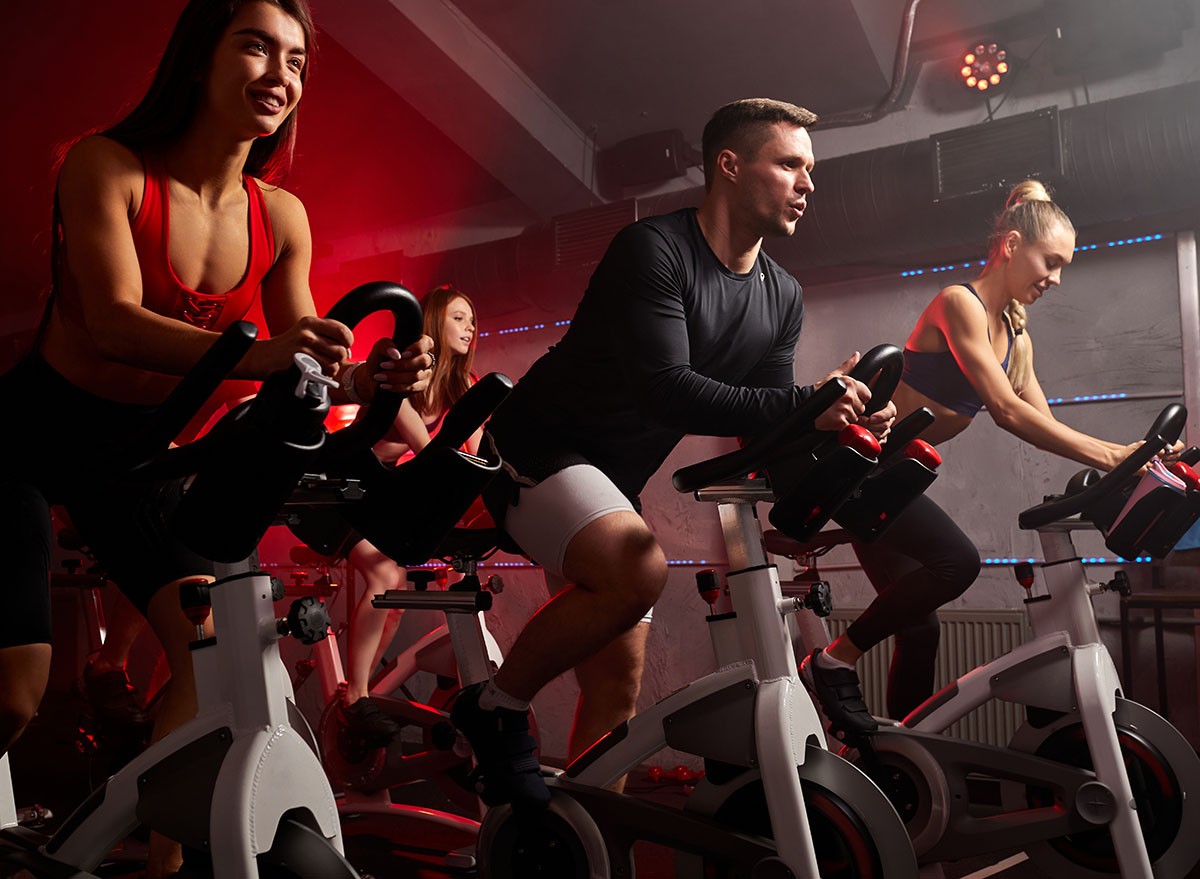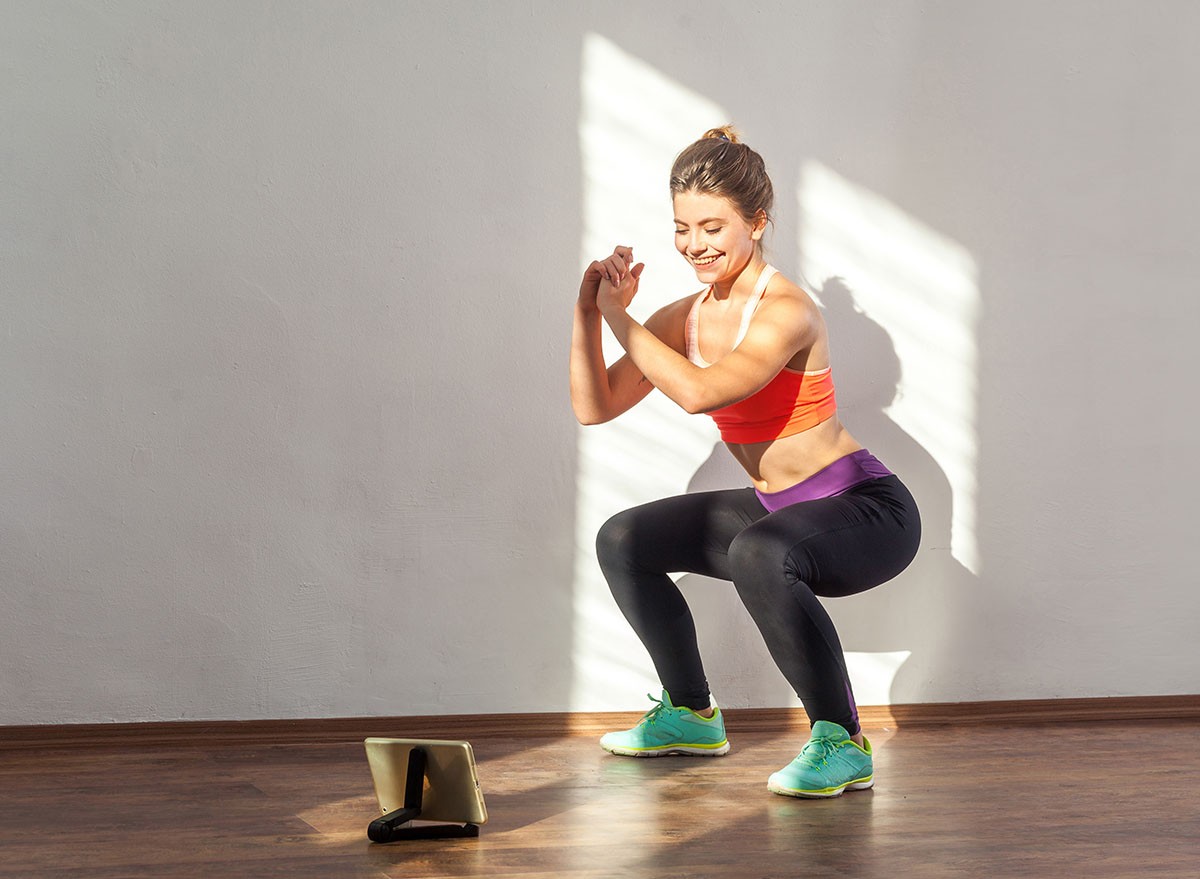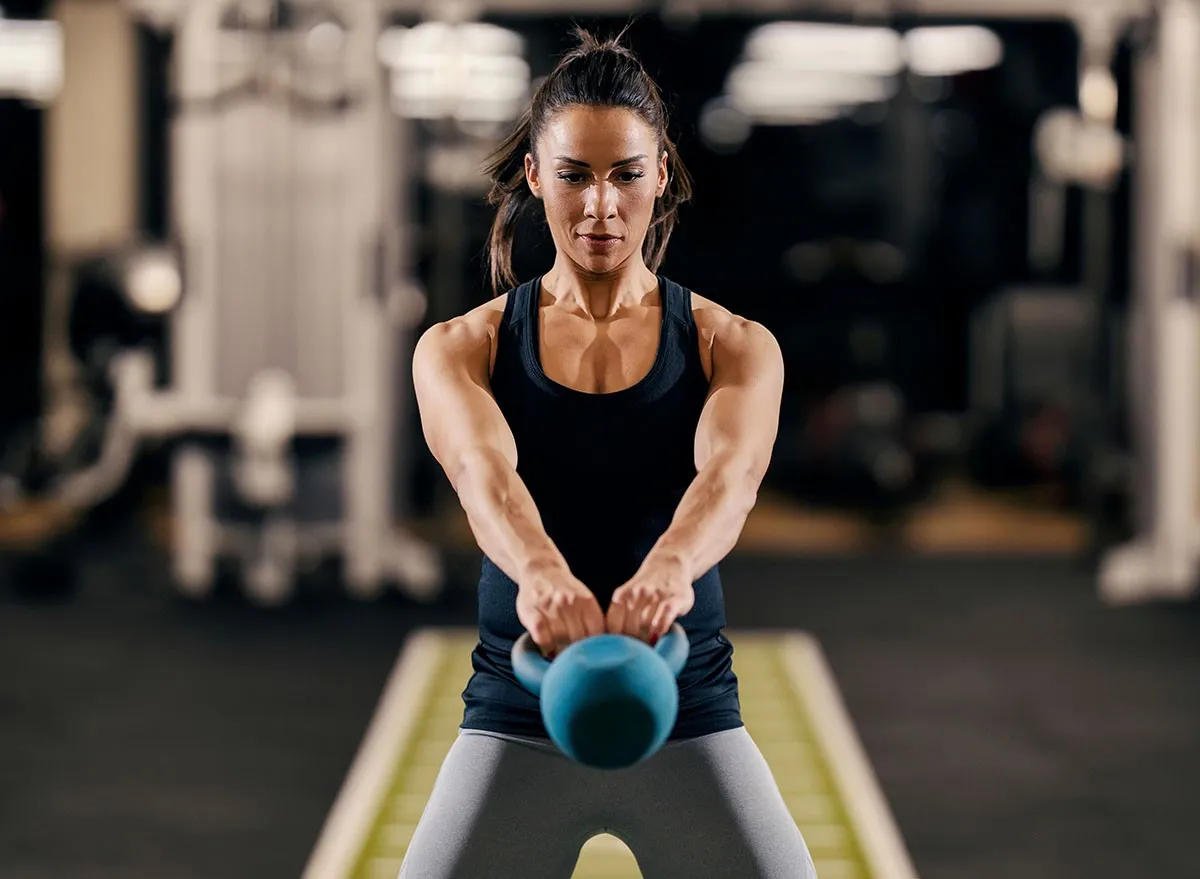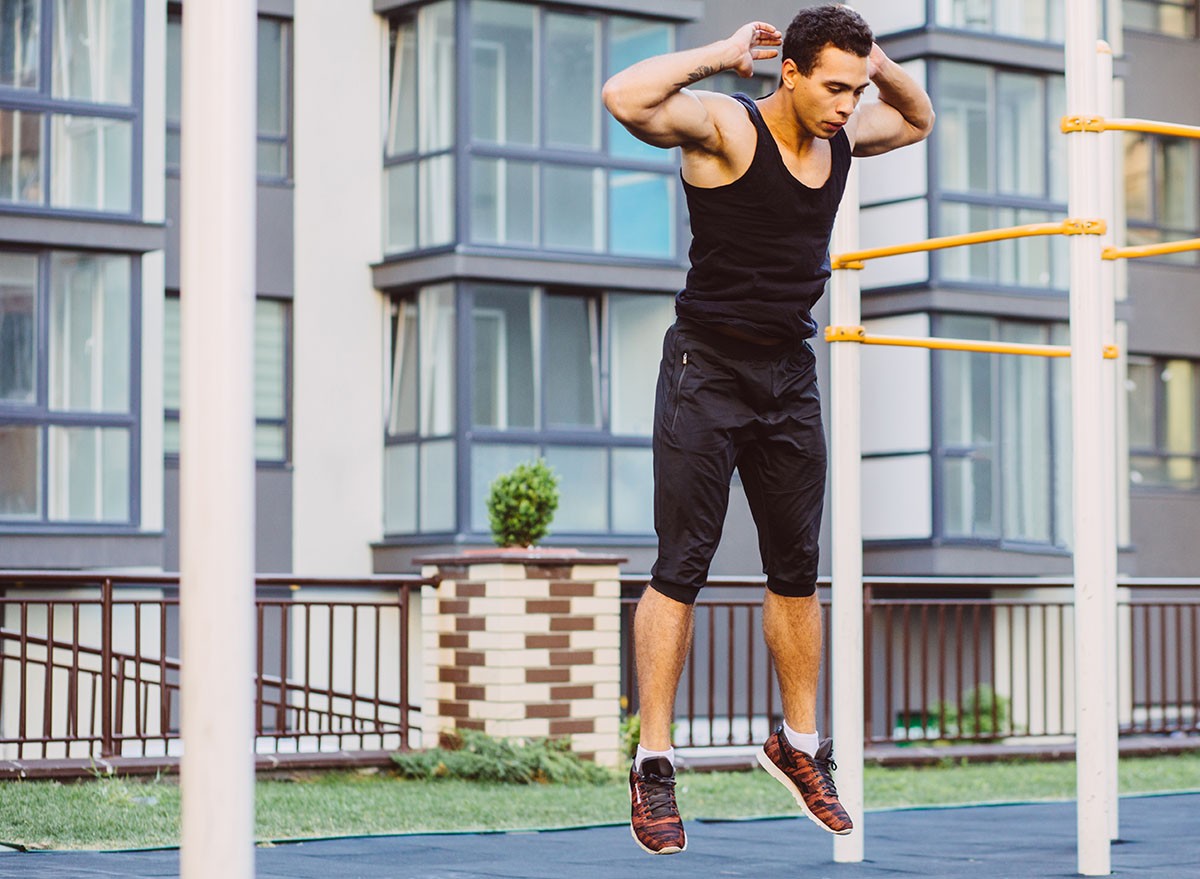I'm a Trainer and These 5 Moves Burn Fat Better Than Cardio

Every January, gyms fill with people logging hours on treadmills and ellipticals, hoping to burn fat. But what if there's a more effective approach? Many fitness enthusiasts don't realize that certain strength exercises can torch more calories than traditional cardio, both during and after your workout.I'm Josh York, a certified personal trainer who's been helping people get fit for years. Back in high school, I played hockey and realized how being in good shape made me perform better on the ice. That's when I fell in love with fitness. These days, I help clients reach their goals through more effective workouts. After years of experience, I've discovered that certain exercises burn fat way more efficiently than spending hours on the treadmill. Let me show you five moves that will transform your workouts and get you results faster than traditional cardio.
Why Cardio Alone Isn't the Answer

Many people think cardio is the best way to burn fat. In my experience, there are two common mistakes – over-relying on cardio and overestimating calorie burn – that most people make when trying to lose fat with cardio. When trying to lose fat, cardio, diet, and strength training are just as critical to provide a balanced routine. Having a proper diet with a calorie deficit and a healthy diet provides effective fat loss. Incorporating strength training aids in building and maintaining muscle mass, both of which are crucial for burning calories at rest and sustaining a healthy metabolic rate. You have to keep a balanced mix of intensity and volume when performing cardio for fat loss for the best results. Read on to learn my top 5 fat-burning exercises.
Squats: The Lower Body Power Move

How to do it: Begin by facing forward with your feet shoulder-width apart. Place your hands on your hips or arms straight in front of you at shoulder height. Bend at your knees while keeping your back straight. Lower to the ground until you reach 90 degrees. Stand back up to the start position.
How often: Aim to do squats three times a week with three sets of 10-20 reps.
Why it works: Squats help to build muscle, which increases your resting metabolic rate – leading to more calories being burned throughout your day. The muscle mass being built requires more energy to maintain in the long term.
Beginner modifications: Two easy ways to modify squats are to place a chair under you in order to create a natural pause at the bottom and control how far you go down. The second way is to not complete the full motion by not squatting as far until you get more comfortable with the movement.
Common mistakes to avoid: The biggest mistake to avoid is not squatting deep enough. Additionally, you want to ensure you don't lean forward, lift your heels off the ground, or round your back.
Lunges: Step Your Way to Fat Loss

How to do it: Stand with your feet together. Place your hands on your hips. Take a step forward with one leg. Bend at the knees until you reach 90 degrees. Stand back up and bring the front foot back to the start position. Repeat with the opposite leg.
How often: The goal when doing lunges is to do them three to five times per week with two to three sets of 10 to 15 reps.
Why it works: Lunges can be performed at a higher intensity and variety, leading to more muscle being built and an increase in resting metabolism like squats.
Beginner modifications: Some simple modifications for lunges include shortening the front step, reduced range of motion with how low you go to the ground, using a chair or wall for support, and performing a reverse lunge to add stability.
Common mistakes to avoid: Focus on your step length so you aren't leaning too far forward. Another common mistake to avoid is pushing your front knee in front of your toes in order to avoid pain in your knee joint.
Dumbbell Overhead Lunge: Add Upper Body Work

How to do it: Place your feet together. Pick up the dumbbells in either a neutral grip or with your palms facing forward. Raise both arms straight over your head and hold the dumbbells above you. Take a step forward with one leg. Bend at the knees until you reach 90 degrees. Stand back up and bring the front foot back to the start position. Repeat with the opposite leg.
How often: Dumbbell overhead lunges should be performed three to five times a week with two to three sets of eight to 12 reps.
Why it works: This exercise engages more muscle throughout your body to help give a comprehensive strength workout to increase your metabolism.
Beginner modifications: The similar modifications to bodyweight lunges can also be used with dumbbell overhead lunges. An additional modification would be to start with lighter dumbbells or no weight in your hands as you raise them above your head.
Common mistakes to avoid: When doing dumbbell overhead lunges, avoid using weight that is too heavy. This can lead to additional common mistakes such as poor posture and leaning forward.
Kettlebell Swing: The Total Body Burner

How to do it: Place the kettlebell directly in front of you at your feet. Hinge at your hips to lower your body down and grab the kettlebell with both hands, palms facing you. Stand up and thrust your hips forward. In the same motion swing your arms straight up to shoulder height. Control the swing back down and squat back to the start position.
How often: For the best results, do kettlebell swings two to three times per week with three sets of 10 to 15 reps.
Why it works: Kettlebell swings combine intensity and total-body resistance training to promote post-exercise calorie burn. This can also be performed in a HIIT-style workout to burn more calories in a shorter time period.
Beginner modifications: Begin by working on the hip movement to master keeping your back straight and core engaged. If using weight, try lighter weight and focusing on controlled movements throughout the exercise.
Common mistakes to avoid: The most common mistakes to avoid with this exercise are squatting instead of hinging, swinging your arms instead of using your hips, hyperextending the lower back, and rounding the shoulders or back.
Burpees: The Ultimate Fat Melter

How to do it: Stand with your feet shoulder-width apart. Squat down and kick your legs out to a plank position. Drop into a push-up. Bring your feet back in to your chest. Propel up off the ground with your arms straight over your head.
How often: Perform burpees two to three times per week, aiming to complete three to four sets of eight to 12 reps.
Why it works: Burpees require a wide range of muscles in a high-intensity exercise to create a greater metabolic boost and calorie burn.
Beginner modifications: As a beginner, start with slower movements such as walking your legs in and out to work on form before speeding the exercise up. Break the workout down to individual movements to perfect each one.
Common mistakes to avoid: It is important to not rush through the workout, while also remembering to keep your core engaged.
Your Weekly Fat-Burning Workout Plan

In order for the best results, structure these moves into a HIIT or circuit-style workout plan.
An example workout plan to follow would be:
Day 1: Full Body HIIT
- Squats – 3 sets of 10-12 reps
- Lunges – 3 sets of 10-12 reps per leg
- Dumbbell Overhead Lunges – 3 sets of 10-12 reps per leg
- Kettlebell Swings: 3 sets of 10-12 reps
- Burpees – 3 sets of 8-10 reps
- Intervals – Incorporate 15-30 seconds of rest between exercises
Day 2: Rest or Active Recovery
- Light Cardio, yoga, or stretching
Day 3: Full Body HIIT
- Squats – 3 sets of 10-12 reps
- Lunges – 3 sets of 10-12 reps per leg
- Dumbbell Overhead Lunges – 3 sets of 10-12 reps per leg
- Kettlebell Swings: 3 sets of 10-12 reps
- Burpees – 3 sets of 8-10 reps
- Intervals – Incorporate 15-30 seconds of rest between exercises
Day 4: Rest or Active Recovery
- Light Cardio, yoga, or stretching
Day 5: Lower Body Focus
- Squats – 3 sets of 12-15 reps
- Lunges – 3 sets of 12-15 reps per leg
- Dumbbell Overhead Lunges – 3 sets of 12-15 reps per leg
- Kettlebell Swings: 3 sets of 15-20 reps
Day 6 & 7: Rest or Active Recovery
- Light Cardio, yoga, or stretching
Maximize Your Results Beyond Exercise

In order to maximize results from these workouts, you must have proper nutrition, plenty of sleep, and proper recovery. When it comes to diet, focus on a calorie deficit so that you are taking in fewer calories than you are burning. You also want to manage protein intake to help support muscle growth, while balanced nutrients – carbs, fats, and micronutrients – support overall health and energy levels. Sufficient sleep will regulate your appetite and metabolism. You have to listen to your body and allow for recovery so the muscles can recover and rebuild. Active recovery like stretching and walking are great options to promote blood flow and reduce muscle soreness on rest days.
What Results Can You Expect?

Overall results with this workout plan would be improvements in strength, stamina, and overall fitness levels. In the initial four to six weeks, a person would experience increased stamina and initial enhancement to muscle definition. Consistency over an eight-week period will lead to higher strength levels and endurance, including increased muscle mass. There will also be a visible loss of body fat.
Ready to Ditch Cardio? Final Advice

Push fears aside and jump into something new. Stick with it day after day, and you'll start seeing those results when you stay committed to the plan. And if you enjoyed this article, don't miss 12-3-30 Walking Method: 20 Proven Tips to Lose Weight Faster.




